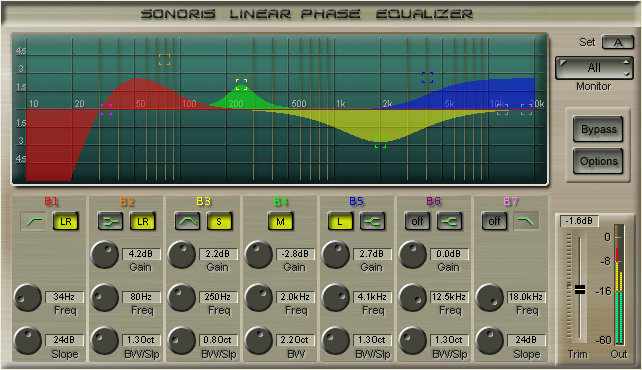

With analog circuits, there will be 90º of cumulative maximum phase shift one way or another for every reactive electrical component (generally a capacitor) in the circuit. Typical audio filters in analog and digital systems will introduce some amount of phase shift to the signal. However, with equalization comes phase shift (generally speaking).Įqualization largely relies on filters to adjust (boost, cut or completely eliminate) frequencies within the audio signal. It is easily one of the most important audio processes there is. We can accentuate important/characteristic frequencies and reduce or even eliminate problem frequencies (noise, interference, resonances, sibilance, etc.).ĮQ is used in mixing, tone shaping, crossovers, feedback control and many more applications. Using EQ, we can effectively alter the frequency content of a signal to best suit the mix.

This process increases or decreases the relative amplitudes of some frequency bands compared to other bands with filters, boosts and cuts. What is audio equalization? EQ is the process of adjusting the balance between frequencies within an audio signal. Related My New Microphone article: Top 10 Best Linear Phase EQ Plugins For Your DAWīefore getting into linear phase EQ specifically, I think it’s important to go over the basics of typical equalization and its relationship to phase in order to set the stage, so to speak, about how powerful linear phase EQ actually is.įeel free to skip ahead to the section What Is Linear Phase Equalization? by clicking the link. We’ll consider the pros and cons of linear phase EQ processing and look at various examples to solidify our comprehension. In this article, we’ll learn all there is to know about linear phase EQ and how it compares to the other types of EQ. Achieving linear phase is not possible with analog circuits and has been made possible with computer coding.

There is no phase shift, and, therefore, the phase is “linear”. What is a linear phase equalizer? A linear phase EQ is a type of equalization that does not alter the phase relationship of the source. This tool can be used to great benefit regardless of how experienced we are with EQ. Linear phase EQ is a powerful audio effect/process that deserves to be understood by audio professionals and hobbyists alike.


 0 kommentar(er)
0 kommentar(er)
